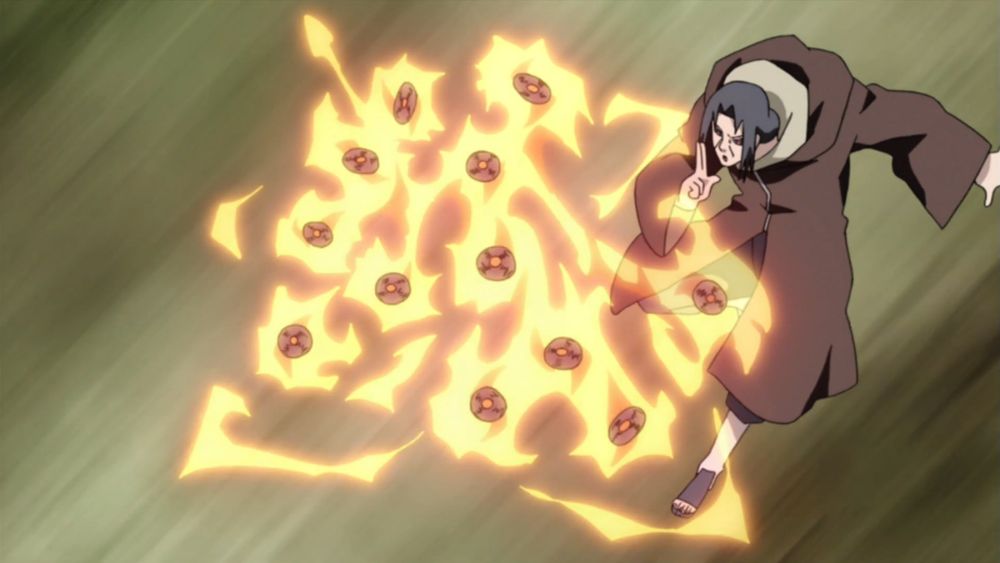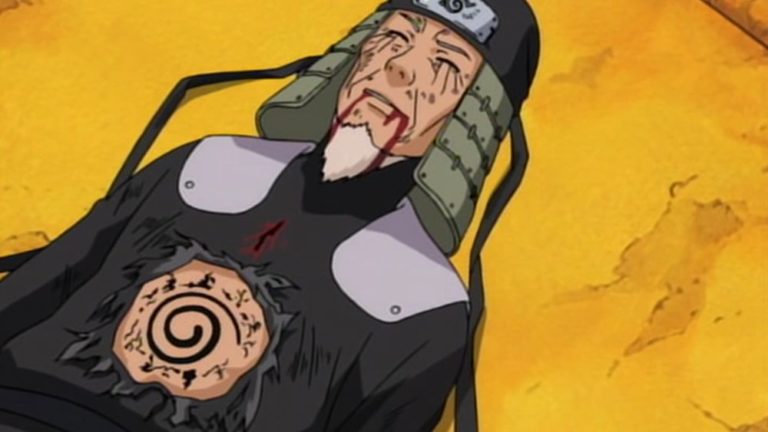Konoha’s Renowned White Fang In Naruto – Uncover The Legend
Konoha’s Renowned White Fang In Naruto – Uncover The Legend
Ah, Konoha, the village hidden in the leaves, home to countless legendary ninjas that have stolen our hearts and ignited our imagination. But, OMG, among these icons stands one enigmatic figure whose tale is woven with heroism, tragedy, and mystery – the renowned White Fang of Konoha. Not as often in the limelight as the likes of Kakashi or the Sannin, yet the White Fang wielded a might that had enemies shaking in their ninja sandals!
Diving deep into the annals of Hidden Leaf history, we’ll uncover the legacy that Sakumo Hatake, aka the White Fang of Naruto, left behind. A figure shrouded in awe and controversy, Sakumo’s story is a potent cocktail of fierce loyalty, unparalleled skill, and the devastating consequences of a single choice that rocked his world. So, whether you’re a newbie to the anime scene or a sage of the fandom, get ready to navigate the depths of this tragically heroic character.
For all ye anime connoisseurs and spirited newcomers alike, fasten your headbands as we embark on a journey through the misty past of the shinobi whose reputation once eclipsed that of the Legendary Sannin. And trust me, whether you’ve binged through Naruto or are just starting your shinobi path, this is a tale that will leave you with goosebumps and possibly a ninja-style yearning for more!
The Legacy of Sakumo Hatake
The White Fang of Naruto isn’t just a moniker; it’s a symbol of legendary prowess and profound sacrifice that resonates throughout Konoha’s history. Sakumo Hatake’s life and actions cast a long shadow, influencing not just his peers and superiors but also shaping future generations. Stay with me here because we’re about to unravel a tale of legacy that is as celebrated as it is somber, leaving an indelible mark on Konoha and the Shinobi world.
The Man Behind the Title White Fang
Before we got to know Kakashi, the cool-as-ice Sharingan wielder, there was Sakumo – his dad, who was quite literally killing it in the shinobi’s scoreboard. This guy was the real deal, a ninja of high caliber, whose exploits in battle had friends singing praises and enemies locking their doors at night. Scouts honor, his reputation was so stellar that at his peak, the mere whisper of “White Fang Naruto” sent shivers down the enemy’s spine like they were caught in a chilled Genjutsu.
Sakumo Hatake, the man behind the title “White Fang,” was a paragon of the Leaf, embodying the quintessence of what it meant to be a shinobi. But let’s keep it real; this was a human being with hopes, dreams, and a love for the village that outshone even his sword’s gleam. And you’d better believe, his choices, his sacrifices, they didn’t just shape his legacy; they molded the narrative of Naruto in ways that have us all captivated.
Sakumo Hatake, also known as White Fang, was a shining example of a dedicated shinobi whose choices and sacrifices shaped the narrative of Naruto.
The Significance of the White Fang in Konoha’s History
The White Fang Naruto lore isn’t just a throwaway backstory, bro. It’s woven intricately into the fabric of the Leaf’s history like that anime merch tee you can’t live without. Sakumo’s tale is one that embodies the complex code of shinobi honor and the weighty repercussions when that code is put to the ultimate test.
His life shapes Konoha’s identity in the same way our beloved Naruto does, representing the heights of valor and the depth of disgrace that come from walking the tightrope of a ninja’s duty. This was a man whose legacy taught future shinobi the importance of the human element in their choices – showing them that sometimes, the heart must lead, even when the rules say otherwise. Sakumo’s story looms large over the series, serving as a silent guardian over the complex web of trials and tribulations that define the world of Naruto.
The Life and Times of Sakumo Hatake
From his early beginnings to his unexpected demise, Sakumo Hatake’s life is a rich tapestry of gutsy heroics and heartbreaking humanity. Let’s peel back the layers of this ninja legend, and delve into the life that would become a crucial cornerstone of the intricate world of Naruto.
Early Life and Rise to Fame
Sakumo’s early life is shrouded in the kind of mystery that you’d expect from a shinobi legend. But trust me, this only adds to his allure! Rising from the ranks like an unstoppable force, Sakumo quickly established himself as one of Konoha’s most fearsome warriors. His journey to fame was akin to that of your first playthrough of an epic JRPG – battling through arc after arc, gaining allies, and making a name for himself that echoed beyond the village walls.
The seeds of the legend were sown early on, as Sakumo proved to be a prodigy in warfare, tactfulness and chakra control. He wasn’t just skilled; he was the ninja other ninjas had fan art of! Serious fanboying ensued as even the esteemed Sannin took note of his prowess – and that’s saying something, right? It wouldn’t be long before the name “White Fang” became synonymous with victory and valor within the Hidden Leaf.

The Pivotal Mission and Ensuing Disgrace
Every hero’s journey has its trials, and oh boy, did Sakumo hit a whammy. On what should have been just another notch on his kunai, a pivotal mission flipped his world upside down. I mean, talk about your classic case of anime turmoil!
Choosing his comrades’ lives over the success of the mission, Sakumo made a decision that would haunt him for the rest of his tragically short life. The backlash from the village was both swift and ruthless – a mirrored reflection of how tides can turn in the shinobi world. Fellow Leaf-nin, whom he had fought beside, now shunned him like he’d brought back nothing but bad filler episodes.
To face such disgrace after a lifetime of dedication was more than just a fall from grace; it was a heart-wrenching tailspin that led to remorse, depression, and ultimately, his demise. Sakumo’s tragic end serves as a testament to the unforgiving nature of the ninja way and sets a poignant backdrop against which his son, Kakashi, would carve his own path.
The Abilities That Defined the White Fang
When we’re talking about ninja swagger, Sakumo Hatake was overflowing with it. The abilities that defined the White Fang were the stuff of legend; an eclectic mix of raw strength, tactical genius, and a fearsome reputation that could turn the tide of battle before it even began.
Sakumo’s Combat Skills and Techniques
Diving into battle, Sakumo was like a conductor at the orchestra, only the symphony was one of devastation for his enemies and his weapon – a masterpiece. His iconic white chakra blade wasn’t just for show; it was as much a part of him as any main character’s signature move – you know, like Naruto’s Rasengan or Sasuke’s Chidori.
His combat skills were both elegant and ferocious, a balance that only true experts can boast. Close-quarters combat, tactical maneuvers – you name it, and Sakumo could do it better than most. And let’s not forget his hand signs – as fluid as if they were born from a ninja ballet. The man was so adept that it was more than just fighting; it was like he was painting a masterpiece with every move.
Sakumo’s combat skills were both elegant and ferocious, a balance that only true experts can boast.
Comparing the White Fang’s Prowess to Other Shinobi
Let’s talk power levels, shall we? Picture this: The White Fang, standing shoulder to shoulder with the likes of the Sannin or the Kage. That’s the caliber we’re talking about here! He was so fierce that his prowess had to be compared to the Sannin themselves, legendary warriors of Konoha – and not as an understudy but as a full-blown rival in might and fame.
This is no small feat considering that we’re comparing him to folks like Orochimaru! Sure, other shinobi may have had their own unique abilities, but Sakumo – he wasn’t just another player in the game; he was a defining face on the Mount Rushmore of shinobi greatness. Legends like the White Fang didn’t just happen every tournament arc. They were those rare boss-level beasts every anime fan hopes to see!

The Psychological Impact on Kakashi Hatake
Can we just take a moment to appreciate how much of an impact Sakumo Hatake had on his son Kakashi? It’s like every time we looked at Kakashi, we could feel the weight of his father’s legacy pressing down on him, shaping his every decision and in many ways, his detached persona.
The Relationship Between Father and Son
Kakashi’s relationship with his father, Sakumo Hatake – the legendary White Fang of Konoha – was a complex web of respect, adoration, and, eventually, deep-rooted pain. As a child, Kakashi looked up to his father, seeing him as a venerated hero whose exploits in the shinobi world were nothing short of awe-inspiring. Sakumo imparted to his son not only his exceptional skills but also the values of honor and loyalty that he himself held dear.
However, the turning point in their relationship was as tragic as it was transformative. Following the infamous mission that tarnished Sakumo’s reputation, the admiration turned to anguish. Kakashi, influenced by the rigid shinobi system and the ridicule faced by his father, developed a staunch adherence to the rules – a sharp contrast to Sakumo’s prioritizing of companions over missions. This ideological shift in Kakashi’s young mind laid the foundation for his early identity as a shinobi and served as a silent tribute to his father’s legacy.
Kakashi’s relationship with his father, Sakumo Hatake, shaped his early identity as a shinobi and influenced his adherence to the rigid rules of the shinobi system.
How Sakumo’s Fate Influenced Kakashi’s Path
The ripple effects of Sakumo’s fate on Kakashi were as profound as they were painful. After witnessing his father fall from grace and subsequently take his own life, Kakashi’s worldview underwent a sea change. Embracing a life led strictly by the ninja code, his emotional walls grew taller, and his demeanor colder; he became a prodigy with an adamant shell, mirroring the haunting turn his father’s life had taken.
Yet, this was not the end of Kakashi’s evolution. The layered narrative of Naruto shows us how, over time, the very lessons that Sakumo failed to pass down directly were the ones Kakashi learned through his own trials. From a stickler for rules to a protector of his comrades, Kakashi’s journey came full circle, echoing back to the very principles the White Fang stood for. In essence, Sakumo’s shadow continued to shape his son’s destiny, molding Kakashi into a legendary shinobi in his own right – compassionate and true to his own brand of the ninja way.
The White Fang’s Influence on the Naruto Series
The White Fang’s legacy is a silent yet powerful undercurrent throughout the Naruto series. Sakumo’s ideological imprint is a lasting one, affecting the show’s direction and the moral compasses of its characters. What makes the White Fang so fascinating isn’t just his unearthed combat prowess, but how his beliefs and fate intertwined to affect the narrative on a deeper thematic level, causing ripples across generations.
Themes of Honor and Sacrifice
The notions of sacrifice and honor stand tall as thematic pillars in the world of Naruto, and much of this can be traced back to the tale of the White Fang. Sakumo’s legacy is an ever-present reminder of the fine line shinobi tread between duty and humanity. His decision to put comrades before the mission embodied a sacrifice that, although initially scorned, ultimately highlighted an invaluable shinobi truth – that the bonds between comrades can be just as sacred as the rules that govern them.
Moreover, this sacrifice brought into question the notion of honor – both personal and as a shinobi. The White Fang, through his choices and the subsequent fallout, sparked a conversation within the village and the audience: What truly defines a shinobi’s honor? Is it unwavering obedience to the rules, or is it the courage to follow one’s heart? It’s a thread that weaves its way through the series, challenging characters to define and redefine what these concepts mean to them.
The White Fang’s Role in the Broader Narrative
Beyond his skills as a formidable shinobi, the White Fang’s most indelible mark on the broader narrative of Naruto is the thematic weight he carries. Sakumo’s story runs parallel to the core struggles faced by many characters in the series – the struggle between personal beliefs and the rigid structure of the shinobi world. It’s a conflict that’s reflected in the journey of Naruto Uzumaki and many others, as they navigate through the complexities of shinobi life, echoing Sakumo’s own inner turmoil.

Through the White Fang, the series broaches intricate questions about legacy, the chains of the past, and how they shape the choices of the present. In exploring the harsh aftermath of Sakumo’s decisions and their impact on Kakashi, Naruto delves into the profound effects that one’s actions can have, not only on personal but historically on the very fabric of shinobi society. The White Fang’s legacy is an integral piece of the complex puzzle that makes the story of Naruto so compelling and resonant with its audience.
FAQs
1. Why was Sakumo Hatake known as the White Fang?
Sakumo Hatake was known as the White Fang because of his formidable combat skills, particularly his use of a peculiar white chakra blade, which earned him the fearsome moniker synonymous with his legend in the shinobi world.
2. How did the White Fang’s actions affect his reputation?
The White Fang’s actions, specifically his choice to abandon a mission to save his comrades, drastically affected his reputation, resulting in his commendable status turning to disgrace among his peers and in the village.
3. What were some of Sakumo Hatake’s most notable abilities?
Some of Sakumo Hatake’s most notable abilities included incredible tactical acumen, mastery of highly potent ninjutsu, and dexterity in wielding his unique white chakra blade, all of which combined made him one of Konoha’s most renowned shinobi.
4. How does the legacy of the White Fang impact the characters in Naruto?
The legacy of the White Fang impacts the characters in Naruto by offering a poignant lesson on the true cost of honor and sacrifice, influencing their decisions and shaping the foundational values of the newer generations.
Conclusion
As we’ve journeyed through the annals of Konoha’s history, the legend of the White Fang of Naruto emerges not only as a tale of valor and downfall but as a galvanizing force in the series’ lore. His story is one of tragedy and heroism, intricately laid out to remind us that the shadows of the past are often reflected in the growth of the present. Whether it’s through the evolution of Kakashi or the broader dynamics among the shinobi, the influence of the White Fang’s tale is inextricably interwoven within the very fabric of the Naruto saga.
For long-time fans, revisiting the White Fang’s legend is like catching up with an old friend, full of nostalgic reflections and renewed admiration. For newcomers exploring the depth of the Naruto series, Sakumo’s story is a mesmerizing dive into the richness of shinobi lore – a testament that the essence of a character can transcend their screen time, leaving a legacy that endlessly endures through the lives they touch. In the realm of shinobi where every kunai etches a story, the White Fang Naruto has carved out a legacy that continues to captivate and inspire.
I can barely contain my feels when I think about how much of an impact one character’s backstory can have on an entire world. Leave it to anime to make you rethink life, right? As we part ways on this article, consider the White Fang’s lasting impression not just on our beloved characters, but on us, the fans, who have cheered, cried, and grown alongside them. Take care, fellow ninjas and remember – your journey is as legendary as the tales you cherish.
With heartfelt regards, Alex
This article uses material from the Naruto wiki at Fandom and is licensed under the Creative Commons Attribution-Share Alike License.







